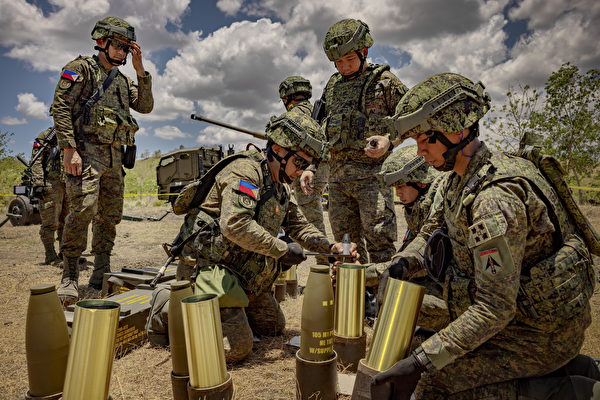The Philippines has long been a key ally of the United States in Asia, but four years ago, the relationship between the two countries was on the verge of collapsing. Today, the US-Philippines alliance is at its strongest in decades. The seemingly unexpected formation of this “dark horse” alliance is actually the result of US diplomatic efforts, the new Philippine president, and continuous interference by China in the South China Sea.
On April 22, the United States and the Philippines launched their largest joint military exercise called “Balikatan,” with 16,000 troops participating. The exercise, which extends beyond Philippine territorial waters into the disputed South China Sea, directly challenges China’s extensive sovereignty claims. The exercise involves the use of US-made missile launchers and anti-aircraft missiles to ensure seamless coordination in potential joint combat scenarios.
Prior to the military exercise, the US, Japan, and the Philippines held a crucial trilateral summit in Washington, where President Biden reaffirmed the US defense commitment in the South China Sea conflict.
This marked the second visit by Philippine President Ferdinand Marcos Jr. to the White House in less than a year. Days before, naval forces from the US, Japan, Australia, and the Philippines conducted joint exercises in the South China Sea, demonstrating strong support for the Philippines. Just weeks ago, US Secretary of State Antony Blinken praised the remarkable development of the relationship between the two countries during his visit to the Philippines, echoing similar sentiments expressed by his counterpart Enrique Manalo.
According to The Wall Street Journal analysis, this shift signifies a strategic victory for the US government in countering China through supporting its allies.
Zack Cooper, a senior researcher at the American Enterprise Institute, expressed surprise at the rapid warming of US-Philippines relations. He told media that “China’s continued provocations have pushed the Philippines into the arms of the United States.”
In 2016, President Rodrigo Duterte leaned towards China after taking office, temporarily suspending US-Philippines joint military exercises and blocking US plans to upgrade military bases in the Philippines. He downplayed the Philippines’ disagreements with Beijing in the South China Sea, while China continued militarizing the islands and reefs there.
As the US began perceiving China as its primary threat, the Trump administration started rebuilding the relationship with the Philippines. In 2019, the US explicitly stated that the Mutual Defense Treaty applied in the event of a Chinese attack on the Philippines in the South China Sea—an assertion reiterated multiple times by the Biden administration.
China’s increasing interference in the resupply missions to the Philippine military outpost at Thitu Island (known as Pag-asa by the Philippines) has escalated tensions. Last month, Chinese coast guard and militia vessels clashed with a Philippine resupply boat, injuring Filipino personnel twice.
In 2016, the Permanent Court of Arbitration at The Hague ruled against China’s extensive claims in the South China Sea, a decision rejected by Beijing, leading to frequent skirmishes with the Philippines in the region.
In response, the Philippines has been leveraging Western media to expose China’s actions globally and strengthen ties with the United States. The US has shown robust support for its ally to curb further Chinese aggression and ensure the continued openness of the South China Sea.
Last year, the US gained access to four additional Philippine military bases, bringing the total number of available bases to nine. Some of these bases are strategically located in the South China Sea or the Taiwan Strait, crucial in potential conflicts in these hotspots. Though not under US control, these bases can be used to disperse troops, launch aircraft and missiles, complicating Beijing’s calculations during hostile actions.
Cooper noted the importance of the Philippines due to its location at the center of the first island chain—from Japan through Taiwan to the Philippines and into the South China Sea.
The latest US intermediate-range missile launchers arrived in the Philippines this month for their inaugural Indo-Pacific exercises. Collin Koh, a senior researcher at the S. Rajaratnam School of International Studies in Singapore, noted that the weapon system named “Typhon” could strike Chinese bases in the South China Sea, coastal regions of mainland China, and even some deeper military targets.
Jay Batongbacal, director of the University of the Philippines Institute for Maritime Affairs and Law of the Sea, remarked that “China’s actions in the South China Sea have provided the Philippines with an opportunity to enhance its defense capabilities through this ‘dark horse’ alliance and develop its own deterrence.”
Batongbacal added that the Philippine military, traditionally focused on internal security operations, is now gaining the necessary training and experience for external defense.

